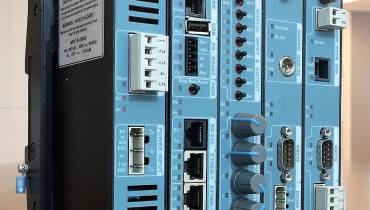How to Improve Team Efficiency and Productivity in Business
![How to Improve Team Efficiency and Productivity in Your Business [node:title]](/sites/default/files/styles/wide/public/team-improve-efficiency-productivity-in-your-business.png?itok=l1Lmmaun)
During any project you are working on, there are likely roadblocks that can hinder the project, obstruct your team's productivity, and prevent the project from being accomplished efficiently.
However, with good management and some effective productivity tips and efficiency practices, your team can work in unison and take workplace productivity to a whole new level.
Best Productivity Tips and Efficiency Practices for Teams
Here're top tips to boost workers' productivity and efficiency so your team achieves their full potential:
1. Set clear goals and track them
Goal-setting is the first step towards successful team performance. Still, problems may arise if these goals seem vague and uncertain, or too complex to grasp and accomplish.
So, set goals that are within reach and attainable by splitting your projects into smaller iterations that will make it easier to see tangible progress on the goals and motivate your team members.
Make it clear to each team member what the goals are on each task, as well as their specific role in achieving them. Explain to your team the priority tasks they should focus on, as well as your expectations of the results and the quality of work they’re to deliver.
2. Delegate responsibilities
Team members will be more engaged in achieving goals and productive if they feel that they own the process; that they can make their own decisions; and, that they’re accountable for their work.
That is why it’s essential to zero in on the strengths of each of your team members and delegate responsibility to them according to their individual strengths, capabilities, and or preferences.
With your team members doing what they are best at and feeling responsible for their performance, they will be more efficient and well set up to reach their full productivity levels.

3. Establish open communication channels
Communication is another crucial factor that contributes to team productivity and efficiency. Establish open channels of communication where individuals can freely convey their thoughts and ideas to each other and with management.
You can do that by fostering a culture of trust and camaraderie among your team members so that everyone can share their ideas openly, as well as talk openly about the issues and challenges they are facing when performing their duties and working on tasks.
With open communication, your team members will have a chance to raise concerns and flag any situation that stops them from achieving their work objectives. They will also be able to get timely support to overcome challenges.
Discussing goals and objectives with team members, as well as conducting timely ideas brainstorming and performance reviews of their work is necessary and beneficial for boosting employee productivity and efficiency.
4. Cut back on unnecessary meetings
Statistics show that organizations typically spend 15% of their collective time in meetings that are most-often unproductive: 92% of participants admit to multitasking during meetings, while 49% use this time to finish other work-related tasks.
Even a short 30-minute unproductive meeting can be a huge loss of energy and time for your team members. Most often than not, you can avoid this with a simple digital update in the form of an email or a Slack message.
An easy way to boost the productivity of your team is to eliminate all unnecessary, energy-draining meetings and gatherings. You can use an app to extract your Google Calendar data and create reports that help you to determine how much time your team members are spending on meetings, and also evaluate the efficiency of meetings. Then, you can replace all the unnecessary meetings with properly planned, and more efficient ones as necessary.
Some other basic things you can do to make your meetings more efficient include:-
- Make an agenda and send it beforehand so each participant can come prepared.
- Include only the participants who are needed and who can contribute to the activity. The more people attend the meeting, the less productive it is.
- Limit the duration of the meeting in advance and try to keep it short.
- Stick to the agenda during the meeting and avoid all distractions.
5. Organize training and education sessions for your team
If you want to give your team members a real boost when it comes to their efficiency and productivity, organize regular and ongoing training and education programs for them to upgrade and develop their skills and capabilities.
For example, you can educate your team about the most effective time management techniques they could use. Some of the top time management techniques they could learn and train on are:-
I. Eisenhower Matrix
This time management technique enables team members to prioritize tasks easily by simply classifying daily or weekly tasks as important/not important, or urgent/not urgent.
The important and urgent tasks need to be done right away, while those important but not urgent can easily be scheduled for another time.
Tasks that are not important but are urgent can also be delegated, while those that are neither urgent nor important can simply be ignored for the time being.
II. Pomodoro technique
When your team member has a complicated task that requires a lot of time and concentration ahead, they might find it useful to split this task into four 25-minute sessions with 5-minute breaks. After the cycle is complete, a longer, 20-minute break follows.
These planned breaks might seem like unnecessary interruptions, but they can help your team members regain focus and maintain a steady flow of energy to continue with their tasks.
III. Eat the frog first
When the task ahead of us is too complicated or too important, we should do it right away instead of drowning into an anticipated fear of failure in this eat the frog first technique.
IV. Biological prime time
Each one of your team members has that time of the day when they’re most productive, and the time when even responding to an email seems too difficult to handle.
By logging the time and activities for a few weeks, your team members will gain insight into their prime time and use this information to organize their activities accordingly.
6. Limit distractions
A big threat to team efficiency and productivity comes from workplace distractions. Distractions can take many different forms: a colleague who wants to discuss last night's game, persistent social media notifications, or a phone call right when they’re “in the zone.”
Distractions can disrupt your team’s focus and prevent them from engaging in deep work. Studies show that it takes people 23 minutes on average to regain that focus, making distractions major productivity killers.
Some strategies you can use to avoid workplace distractions:
- Schedule time for checking your inbox once or twice during your working hours.
- Limit your internet browsing and social media usage to breaks.
- Create quiet areas in the office, where you and your team members can focus on deep work.
- Use noise-canceling headphones when you want to eliminate distractions.
- Offer your team members a chance to work from home when possible. You will help them save time and energy wasted on commuting, thus giving them yet another boost to their flexibility.
There you have it! Use the aforementioned proven ways to ramp up your team efficiency and productivity, so both your business and your employees meet their objectives and succeed.
Remember, no matter how efficient your team is, there’s always room for improvement.



![9 Tips for Managing Your Online Writing Projects Efficiently [node:titile]](/sites/default/files/styles/thumbnail_rectangle/public/open-book-laptop-online-writing-tips.jpeg?itok=iq4PIT7b)


















